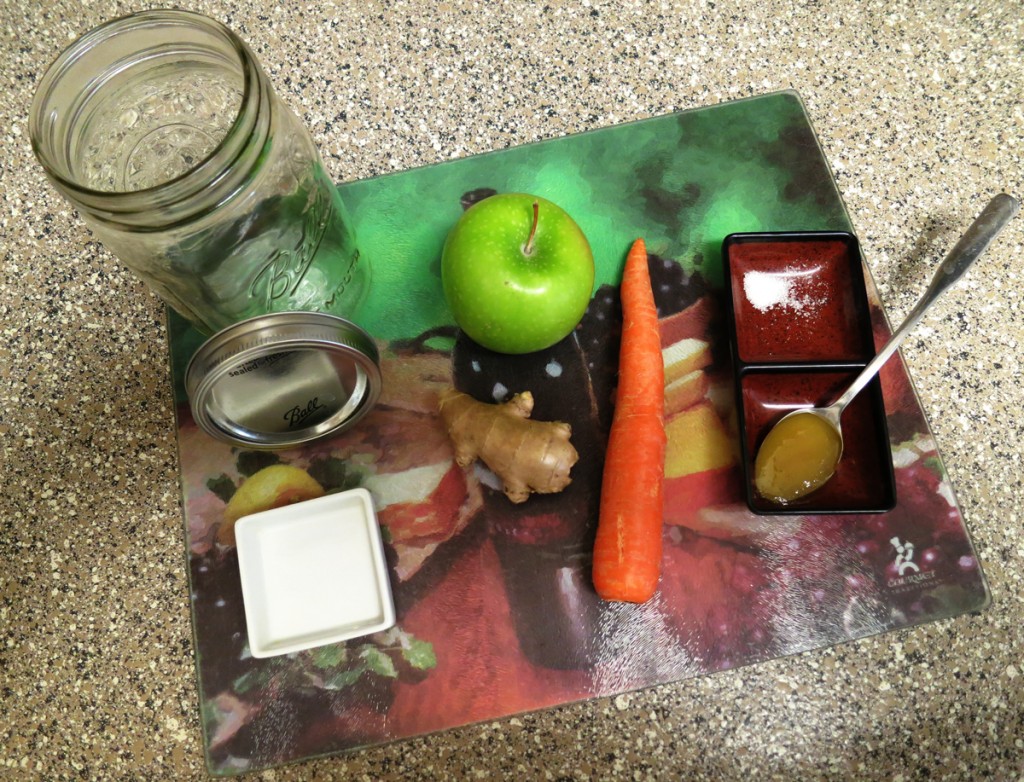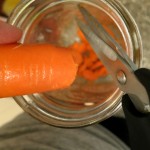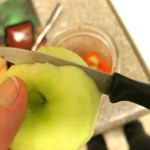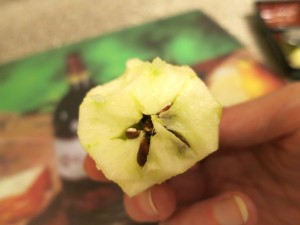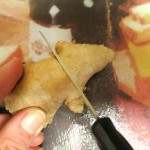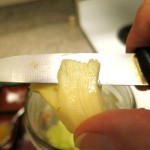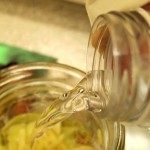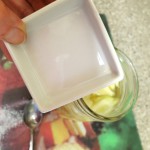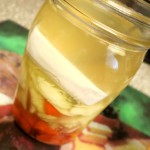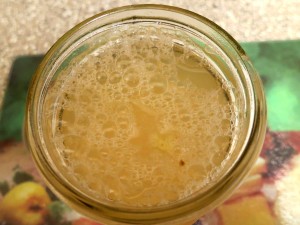Tag : digestive
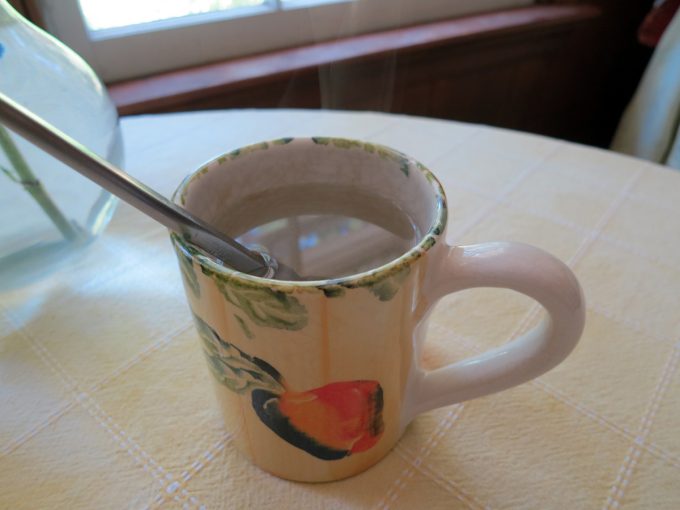
This ginger tea recipe is as simple as a crystal-clear blue sky…just two ingredients. As always, organic is preferable.
You’ll need these two items:
- 1 – 2 Dashes Ginger Powder
- 1 Small Spoon Stevia Powder
…and you’ll also want to have on hand some hot water and a tea mug 🙂
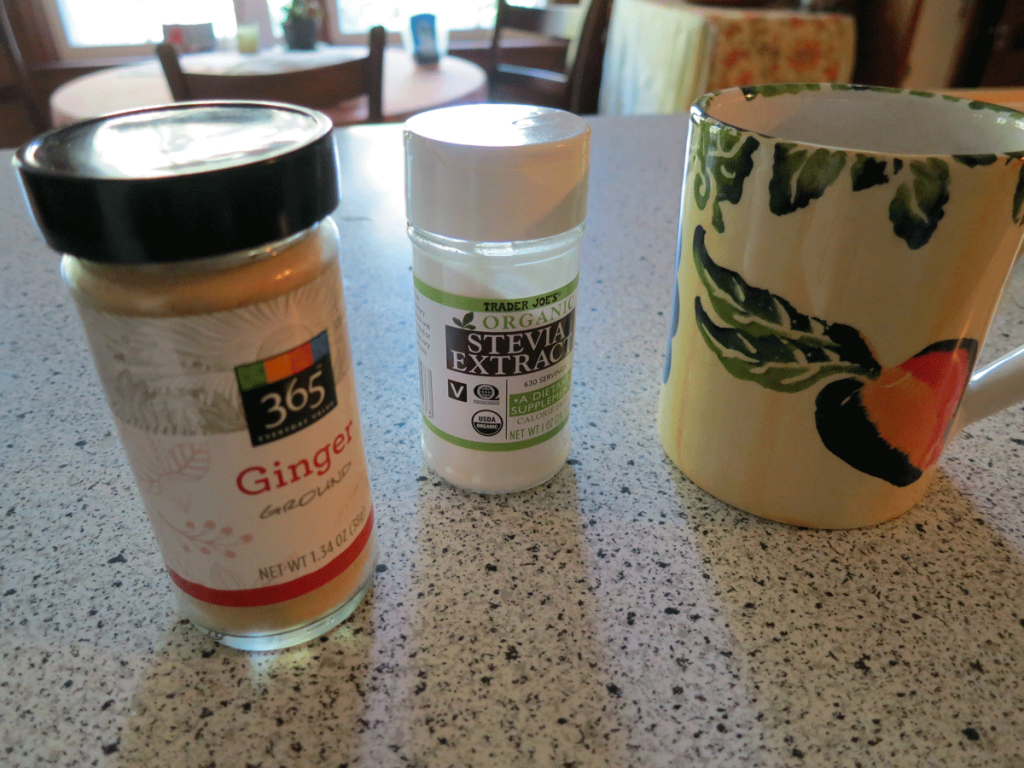
Add 1 – 2 dashes ginger powder to your tea mug:
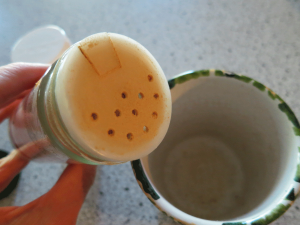
Next, add in the stevia…
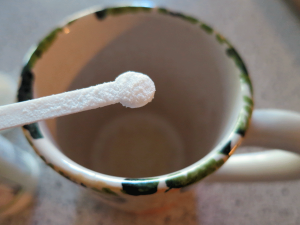
…and note how I’m using the little white spoon that usually comes with a container of stevia. Also note that I let the stevia heap and crawl up the handle, because my sweet tooth will have me asking for sweet things long after I’ve left this mortal coil.
Lastly, pour in some hot water, stir and you’re good to go! Very helpful to sip this with a meal…ginger is a well-known digestive, and is among my favorites aside from chewing fennel seeds or having a glass of red wine.
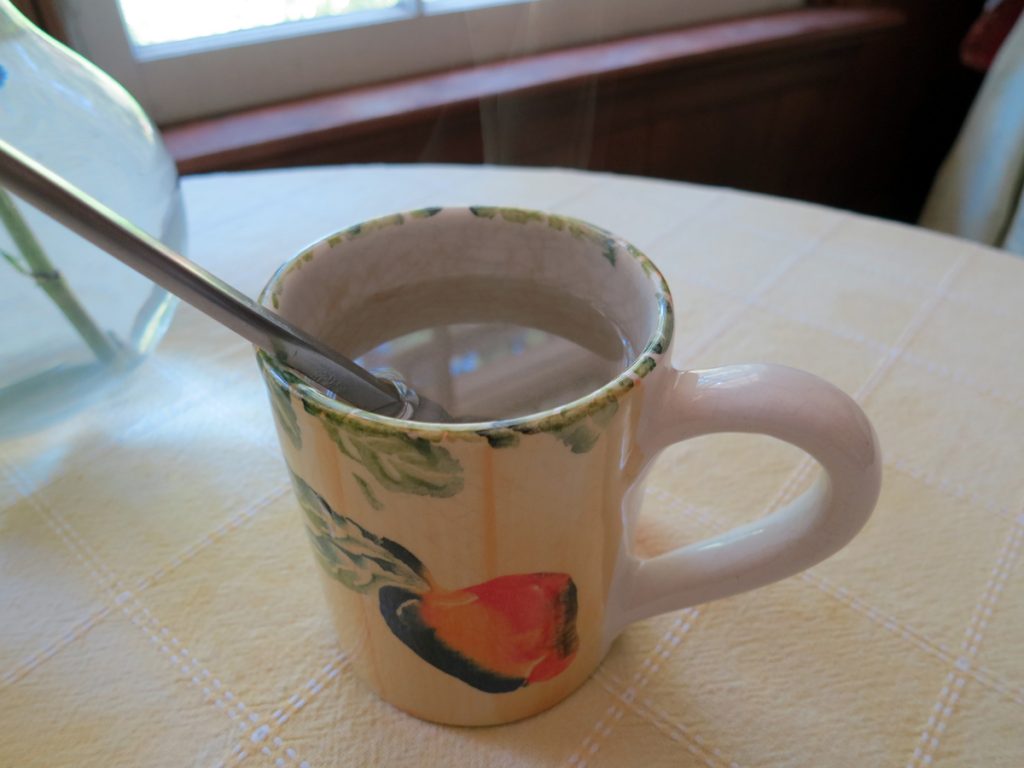
Drink up and enjoy!
Yours in Great Health,
Alison
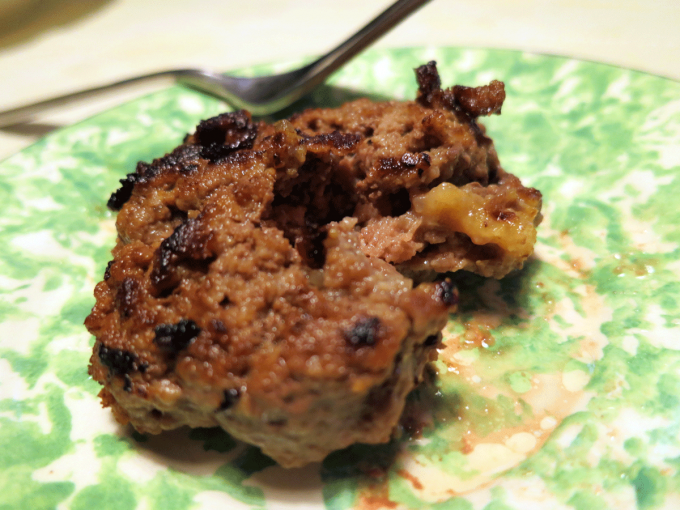
There’s something about a juicy, grass-fed beef burger that never, ever disappoints. And it’s even better when there’s salty, full-flavored and digestive-aiding miso involved. The flavors here mix very well, and this recipe is so damn quick and easy, you just might find yourself making these quite often.
As someone dealing with the Big C, I’ve often been lectured (mostly by lay people) about beef being a no-no, when actually it is part of my doctor’s orders. “No-no-NO vegetarianism for you!” she always admonishes. It seems my need for nutritious, carefully-sourced red meat just is. My body’s demands for minerals, fats, and other necessary substances are rather high. I have a very fast metabolism and the need for a lot of nutritious food.
Grass-fed beef in particular has health benefits that go beyond the label, and I think a lot of the criticisms I’ve heard about beef are truthful – if it is factory-farmed beef, that is. But organic and/or grass-fed beef is a different animal entirely. Literally. And, most importantly, chemically. It contains a great balance of Omega-3 and -6, CLA (or Conjugated Linoleic Acid, an important fatty acid), is nutrient-dense and is the way nature intended. According to Mercola, CLA bennies are many – including anti-tumor benefits in the case of cancer.
So to those who pan beef (pun certainly intended!), I say this: Try being more aware of where your beef is sourced – and what its actual chemical profile really is – instead of using the too-wide brush to declare all beef as bad. It is not.
Do read Fastfood Nation by Eric Schlosser to get rid of any factory-farmed meat-eating habits that you still practice. It’ll turn your stomach in ways you’ll need to stay aware and healthy, and it’s right up there with Upton Sinclair’s The Jungle.
That said, all you need for these delicious and highly satisfying and nutritious miso beef burgers is beef (get organic and/or grass-fed) and miso (I used Westbrae Natural’s for this recipe because it is organic and has very few ingredients – rice, soy, sea salt, water and koji starter):
- 1 lb ground beef (grass-fed and/or organic is healthiest)
- 1 heaping spoonful of miso
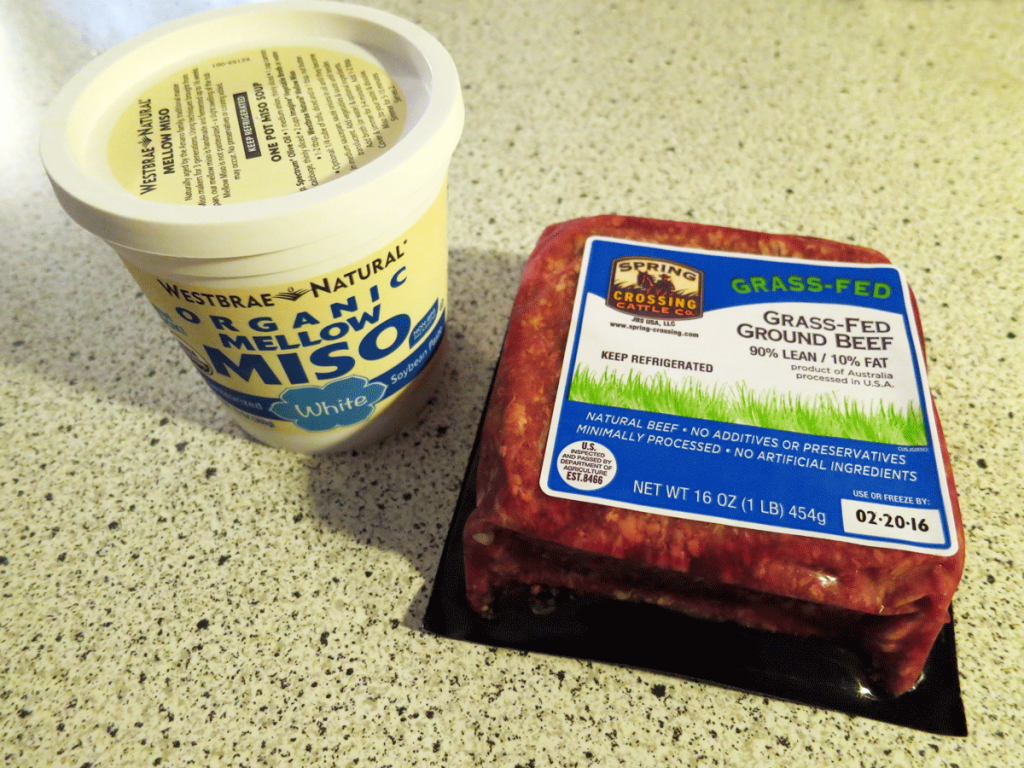
I consider this as a Simple as Hell two-ingredient recipe, yes, but the miso is technically a cheat. I have completely rationalized my cheating as fair – since I didn’t make the miso, I count it as a single item in this two-item recipe 🙂
Start with a small mixing bowl, or even a large cereal bowl will suffice. Place the beef into the bowl, and add a heaping spoonful of miso (and note the spoon I’m using is just a regular flatware spoon):
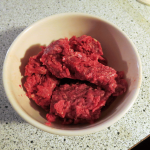
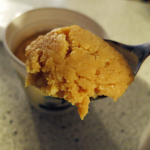
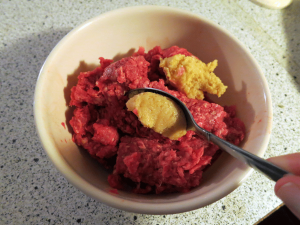
Next, briefly mix the miso into the beef, but don’t overdo it. I tend to like biting into a burger where there are little pockets of just plain miso. It adds variety, surprise and makes for a much more delicious burger than if you stir the hell out of the miso and beef such that they “become one” – and too much stirring is a surefire way to toughen the beef such that it doesn’t taste as good texture-wise:
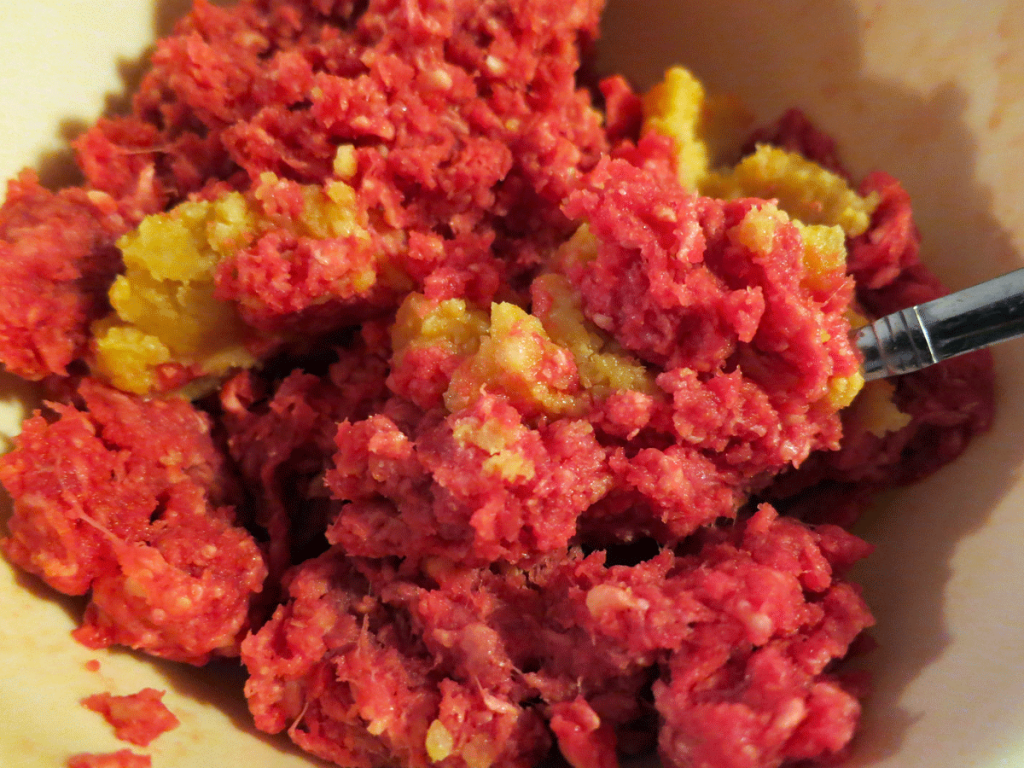
After that, quickly and lightly form the miso-beef mix into burgers, your preference as to the size – quarter-pounders, six burgers to a pound of beef…or mini-burgers, whatever you like…
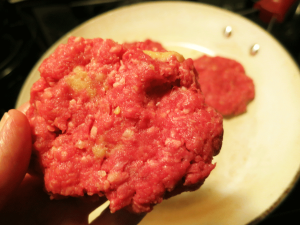
Place your burgers in a hot frying pan on medium to medium-high heat. Important note: I don’t use any cooking spray or third-party grease when cooking burgers or any other cut of beef, with the occasional exception of cow’s milk butter. Burger meat is fatty enough to cook in its own fat – why corrupt it?
When I want browned-on-the-outside, but rare-on-the-inside burgers, I find a medium-high setting to be best. When I want more thoroughly-cooked, but not-so-brown burgers, the lower setting works better. However you like your burgers, find the adjustment that suits you!
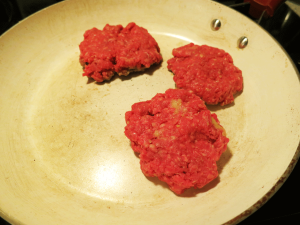
Turn the burgers over when you see the outside edges getting brown, usually several minutes, depending upon how high your heat setting and the quirks of your range are. When the burgers are done to your preference, it’s really nice to serve them up on a nice plate for all to admire before digging in!
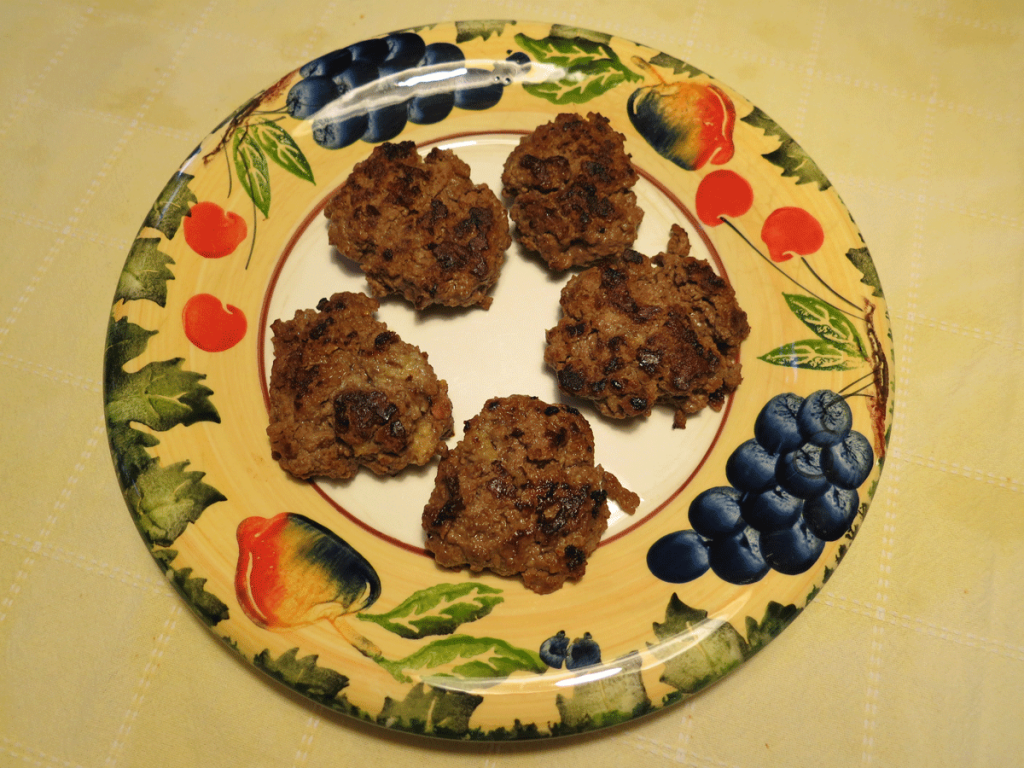
And damn, these are good! They melt in my mouth, and you can see why below…
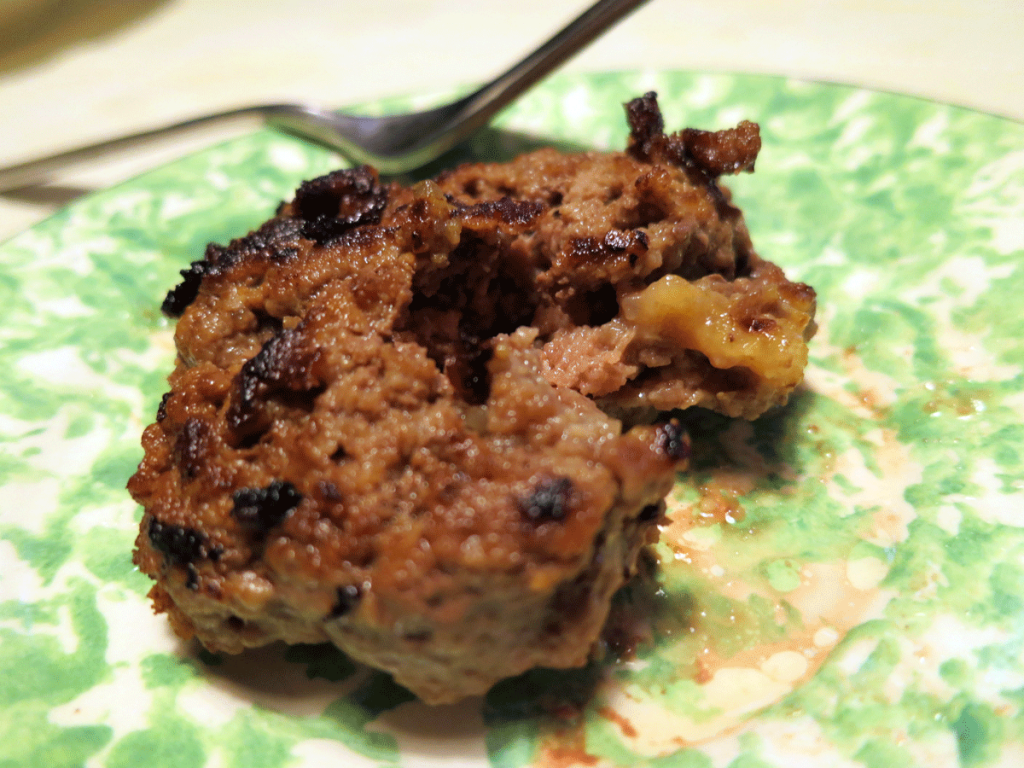
Enjoy!
Yours in Great Health,
Alison
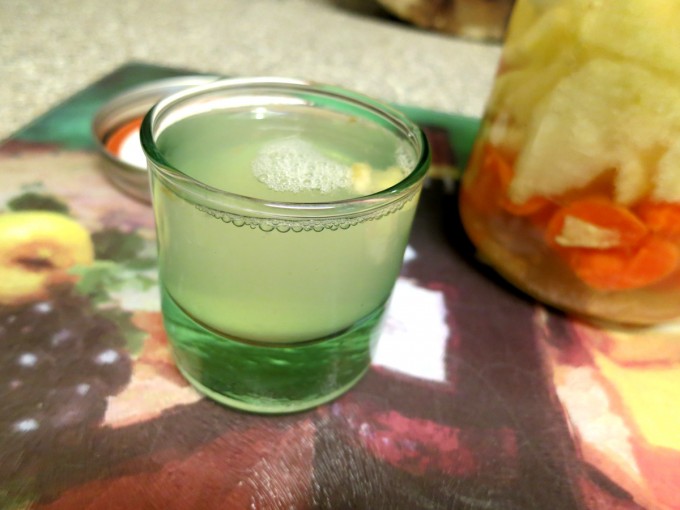
For years, I’d spent considerable money on probiotic supplements, some of them $50 a small bottle (or more). After that, I made water kefir using grains and a kit I’d bought on eBay, which was an interesting experiment in learning how to make yummy freeze-dried strawberry soda. Much cheaper, but it was altogether way too high in sugar.
Flash forward to two months ago when I got a hint from a friend in the know that I could just use some fruit, honey and sea salt to make a fine probiotic drink with a better carb profile…without babysitting any grains or the like. He used some apples, berries and a little bit of honey sans the sea salt for his version, which was where I started. Experimenting some more, I decided to use a time-tested formula that many cancer survivors (and thrivers) I know use for juicing: apples, carrots and ginger root. Except I would ferment them instead of juicing them.
I ended up with a great recipe containing live probiotics that is not only healthful and quite tasty, but produces zero waste in the bargain. Big on taste, zero waste.
Onward. Please gather the following items…and use organic where possible:
- Green Apple
- Mid-sized Carrot
- About 4 cm of Ginger Root (thick, thin, less or more to your taste)
- Heaping Teaspoon of Honey (I use a long teaspoon like the ones I use to stir my iced tea, not a measuring spoon – see pic above)
- 2 – 3 Hearty Pinches of Sea Salt
You will also want to have on hand:
- Small Ceramic (a small ceramic is good – I use a cheesecake ceramic dish borrowed from the Bellagio)
- Wide Mouth Quart or Liter-sized Mason Jar
- Water (Spring is best – enough to nearly fill the Mason Jar)
Rinse the apple and carrot with spring water, brushing lightly and briefly with a veggie brush or a clean scrubbie…don’t overdo it as you want to preserve the soil-based microorganisms that are so beneficial. Slice your carrot into thin slices with knife or kitchen shears into the Mason jar. Eat or compost the ends. Follow with slicing the apple, peel it if you wish and save the peel for either eating or composting…same with the core. The seeds are full of natural, cancer-fighting laetrile and should be eaten with the core while making this drink 🙂
Next, lightly peel and slice your ginger. As with the carrot and apple, the thinner you slice it means more surface area for the good critters to grow on. Follow by adding enough spring water to come up about an inch – 2.5 cm – below the jar’s top lid.
Now, add the honey and pinches of sea salt. Stir until all the honey is dissolved using the long teaspoon. This will take a few minutes, and will get all the ingredients mixing together nicely for the fermentation. The honey and salt may seem counter-intuitive, but these are essential for minimizing any bad critters that might try to grow into your mix.
You’ll notice the apples will float, so the next step is to place your ceramic carefully into the jar such that it keeps all the fruit and veggies down. Use the long teaspoon for this as well.
If the water level comes to about 1 – 1.5 cm – or about half an inch – below the jar’s top lid, you’re golden. Seal it up! If it’s not quite there, add a little water. If it’s too close to the lid, spoon off a couple spoonfuls into a shot glass and drink up.
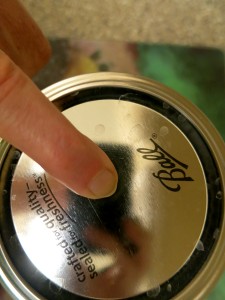 Let the mixture sit for 2-3 days before tasting. You should see small bubbles start to form, and when the lid cannot be pressed down, it is a good sign that you’ve got a good fermentation going. Letting the mixture ferment for 3 days is good before taking the first drinks, and I keep my shot glass nearby for the purpose. Smell the mix, if it smells warm and mildly sweet, you’re doing great. The Day 3 mix tastes mostly mellow and sweet, maybe a little tang, and just a little bite-y or fizzy. The longer you ferment, the more the sourness of the flavor grows…and I’ll point out here that it is good to smell the mix to make sure it hasn’t gone “off” – truth be told, I’ve never had a bad mix, but use common sense, pretty please.
Let the mixture sit for 2-3 days before tasting. You should see small bubbles start to form, and when the lid cannot be pressed down, it is a good sign that you’ve got a good fermentation going. Letting the mixture ferment for 3 days is good before taking the first drinks, and I keep my shot glass nearby for the purpose. Smell the mix, if it smells warm and mildly sweet, you’re doing great. The Day 3 mix tastes mostly mellow and sweet, maybe a little tang, and just a little bite-y or fizzy. The longer you ferment, the more the sourness of the flavor grows…and I’ll point out here that it is good to smell the mix to make sure it hasn’t gone “off” – truth be told, I’ve never had a bad mix, but use common sense, pretty please.
I find that Day 4 produces the flavor and the amount of fizz (quite a bit!) in the drink that I like most, so I take the most shots on this day…and yes, I’ve even had “die-off” or Herxheimers on occasion – this stuff does the job. After Day 4, I either let it sit out one more day and drink a more sour version, or I put in in the fridge on Day 4 to slow down the fermentation, though this reduces the fizz to almost nothing. I try and use up everything, liquid, solids and all, by Day 5. That seems to be the optimal time frame for taste, etc.
I often add a small amount of stevia to my shot glass with the probiotic drink – delicious! It tastes like a fizzy, slightly soured version of ginger ale, the stevia adding just the right amount of sweetness to make a sweet-tart and healthful drink.
As you drink and the liquid level lowers, the remaining apple-carrot-ginger solids and liquid can be refrigerated for a kvass-style probiotic digestive (click the “+” button at the top right of this page to see that image) that makes a great and very healthful side dish to any meal. Just a spoonful or two is wonderful, and soon you’ll have consumed all the liquid and the solids, meaning zero waste for this one.
Enjoy!
Yours in Great Health,
Alison

